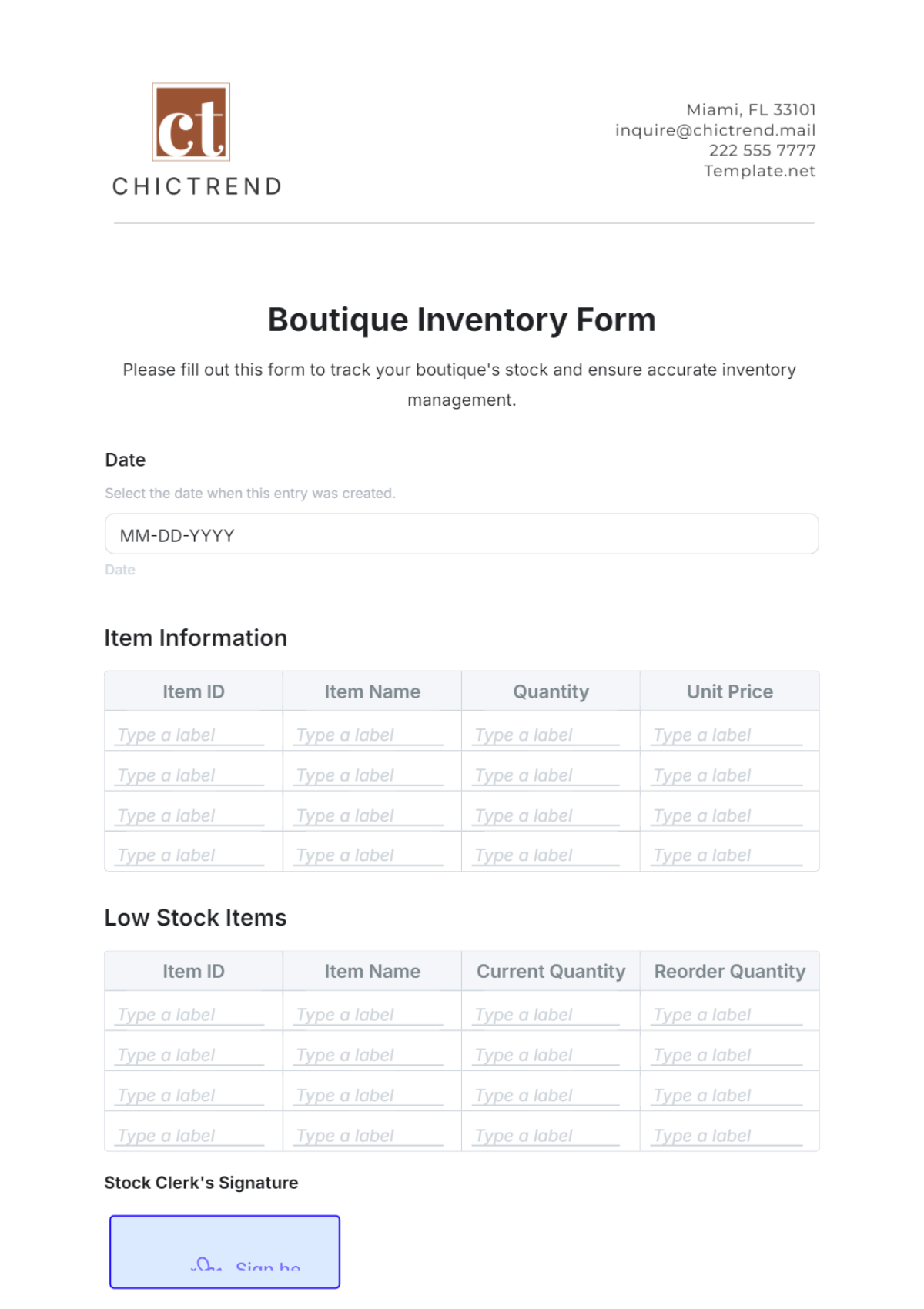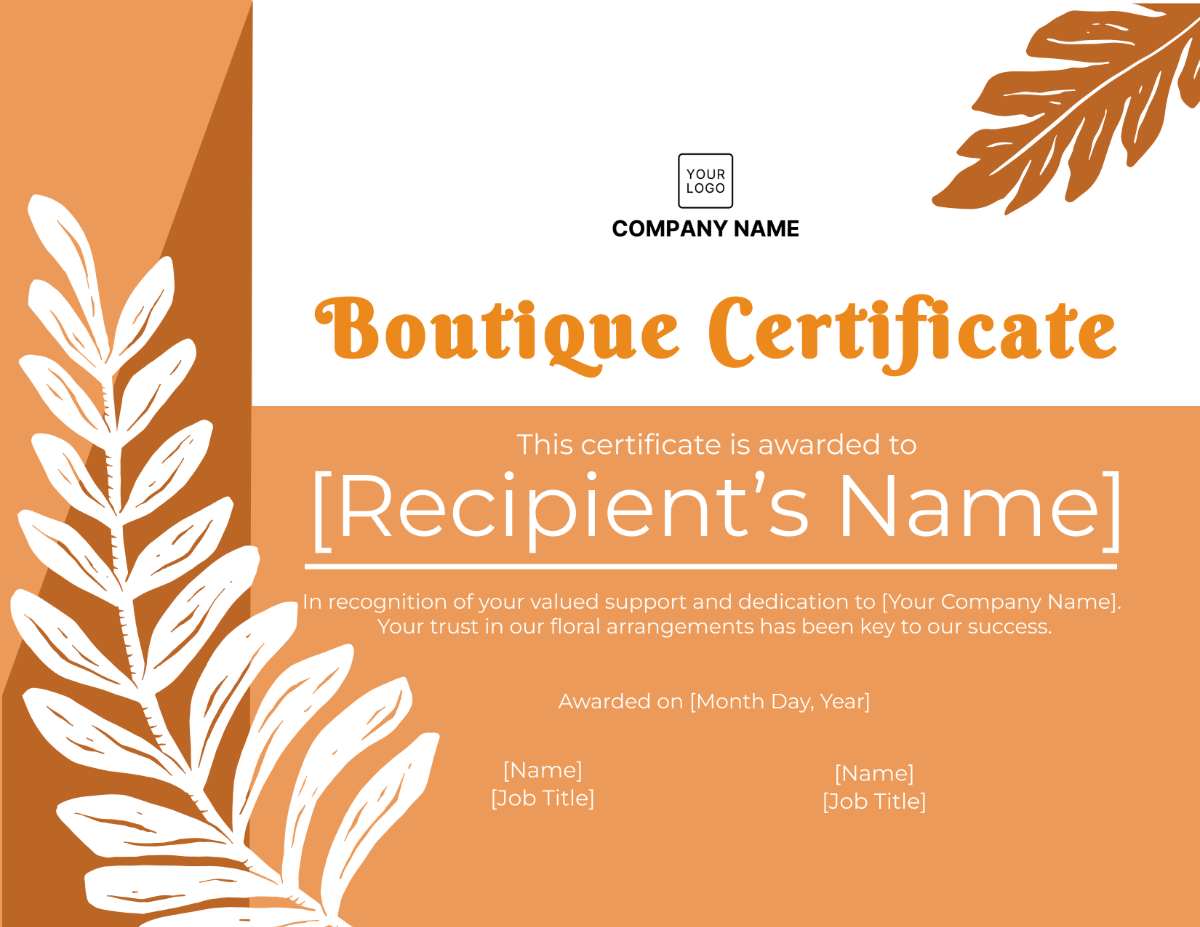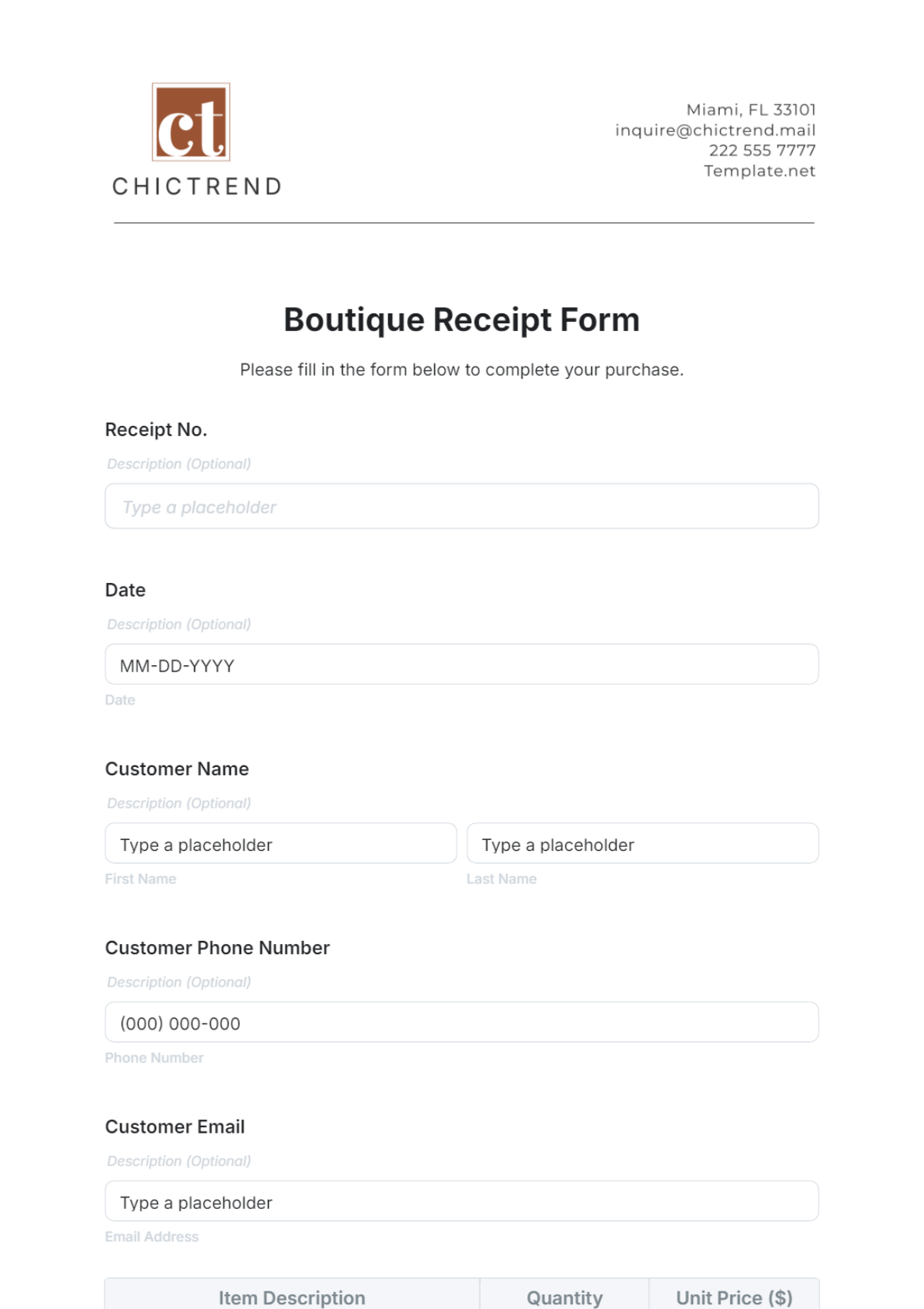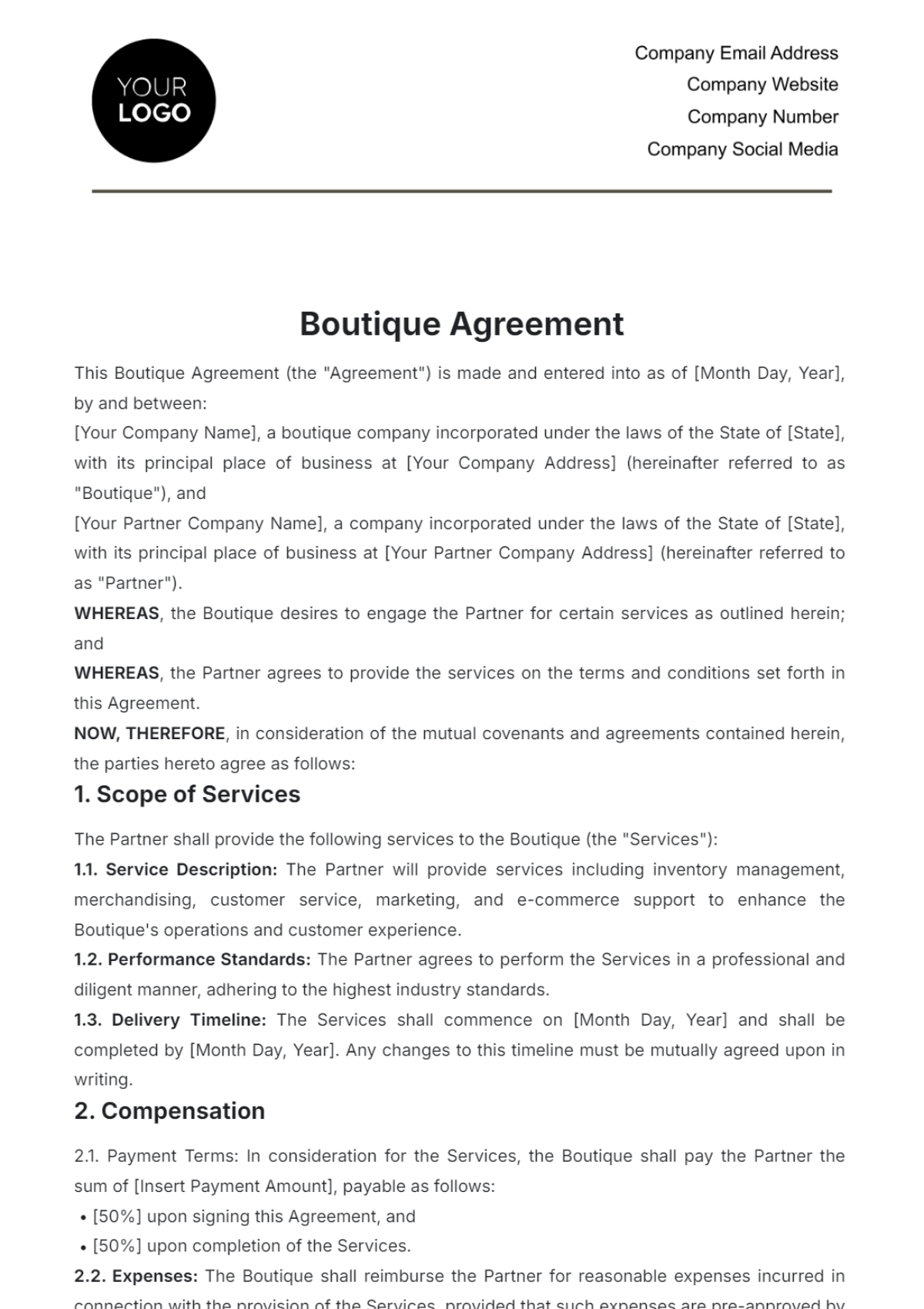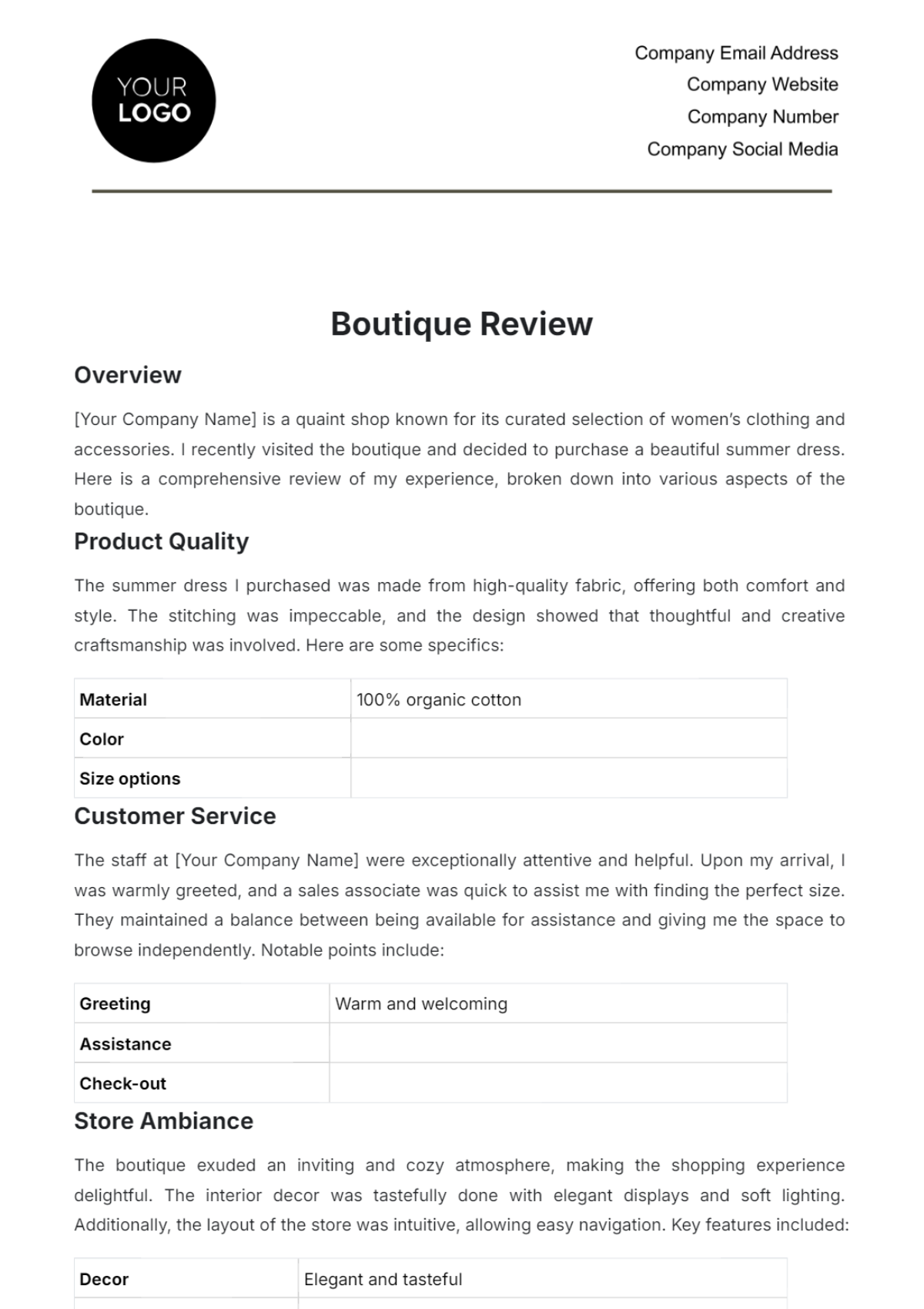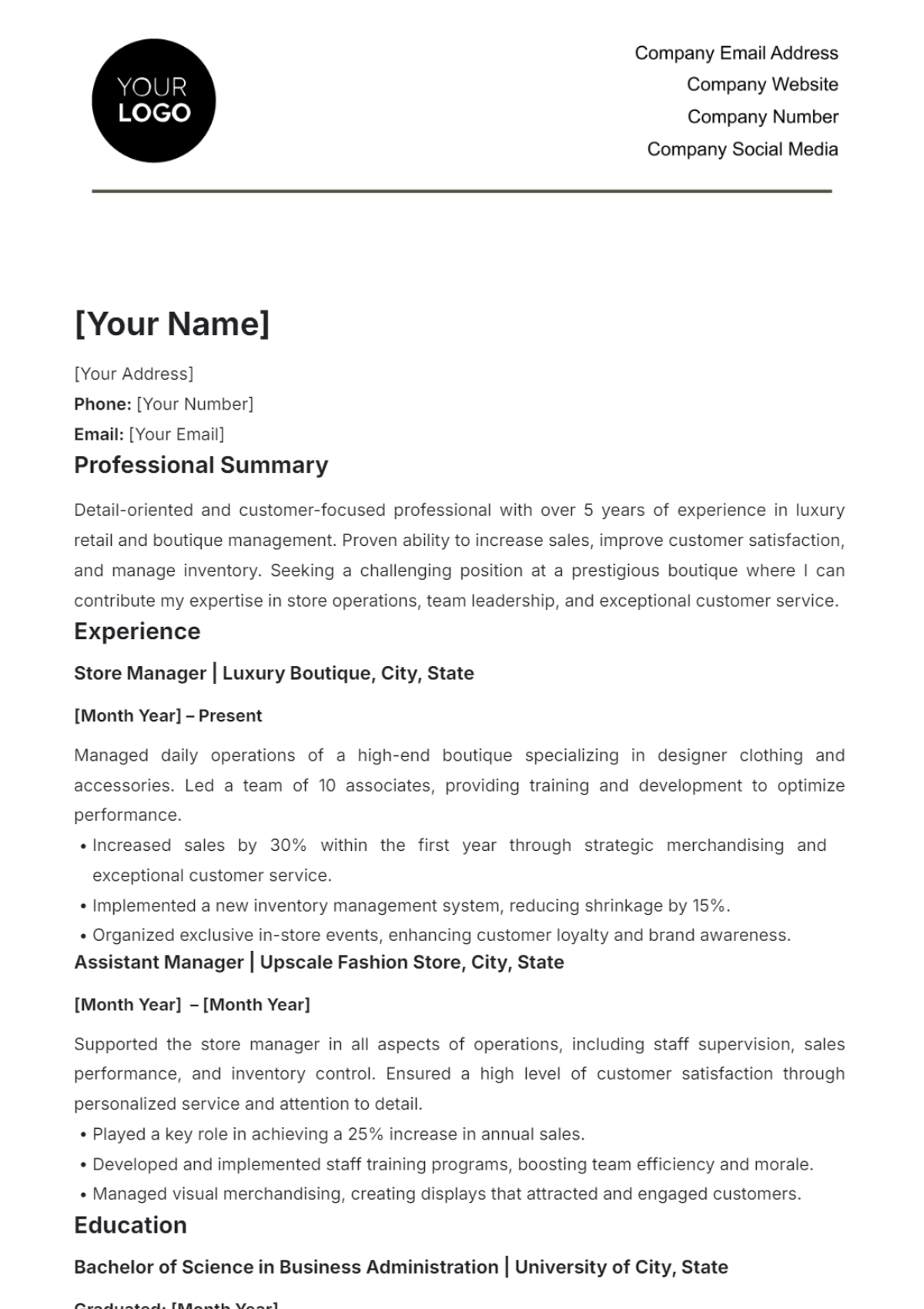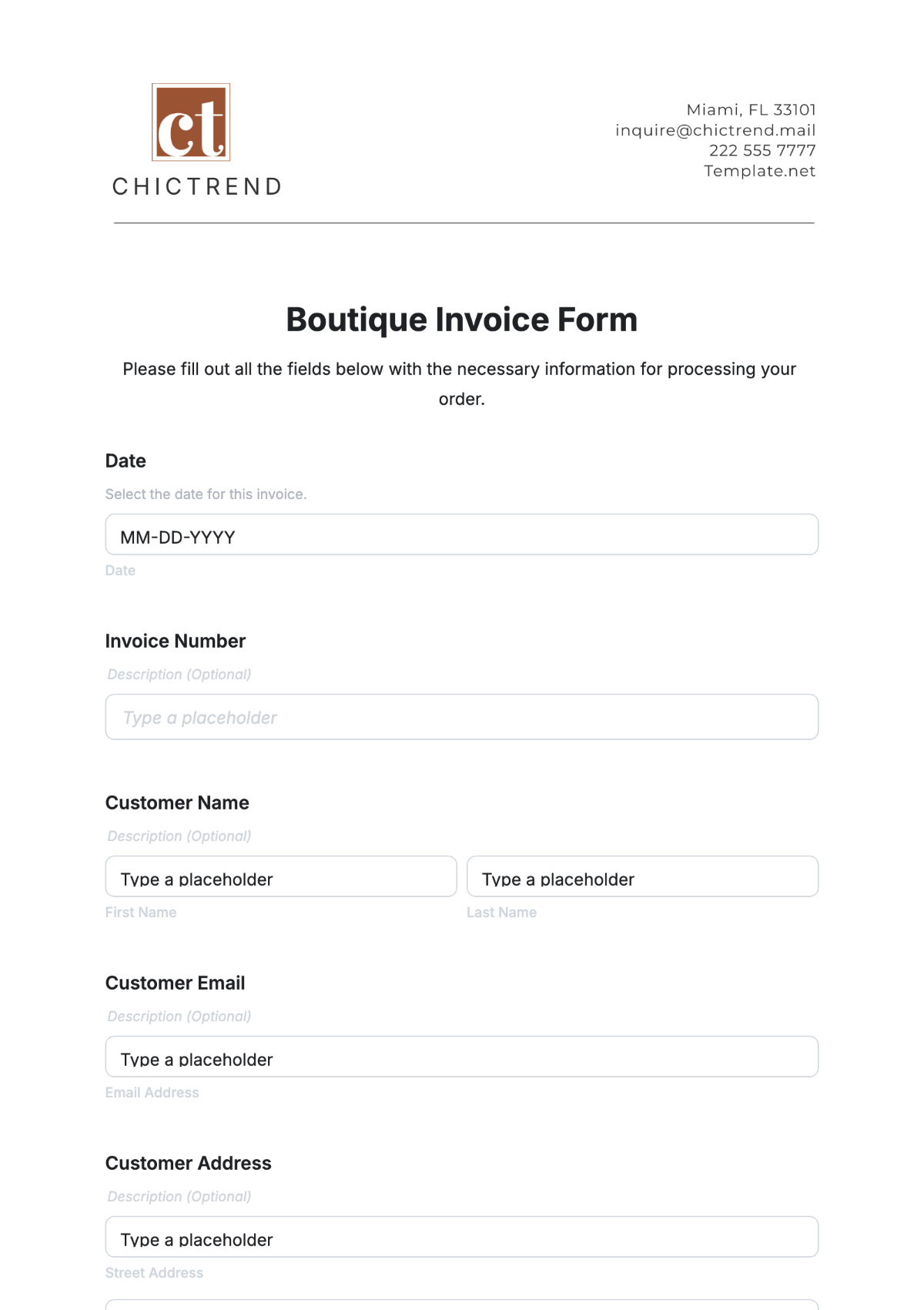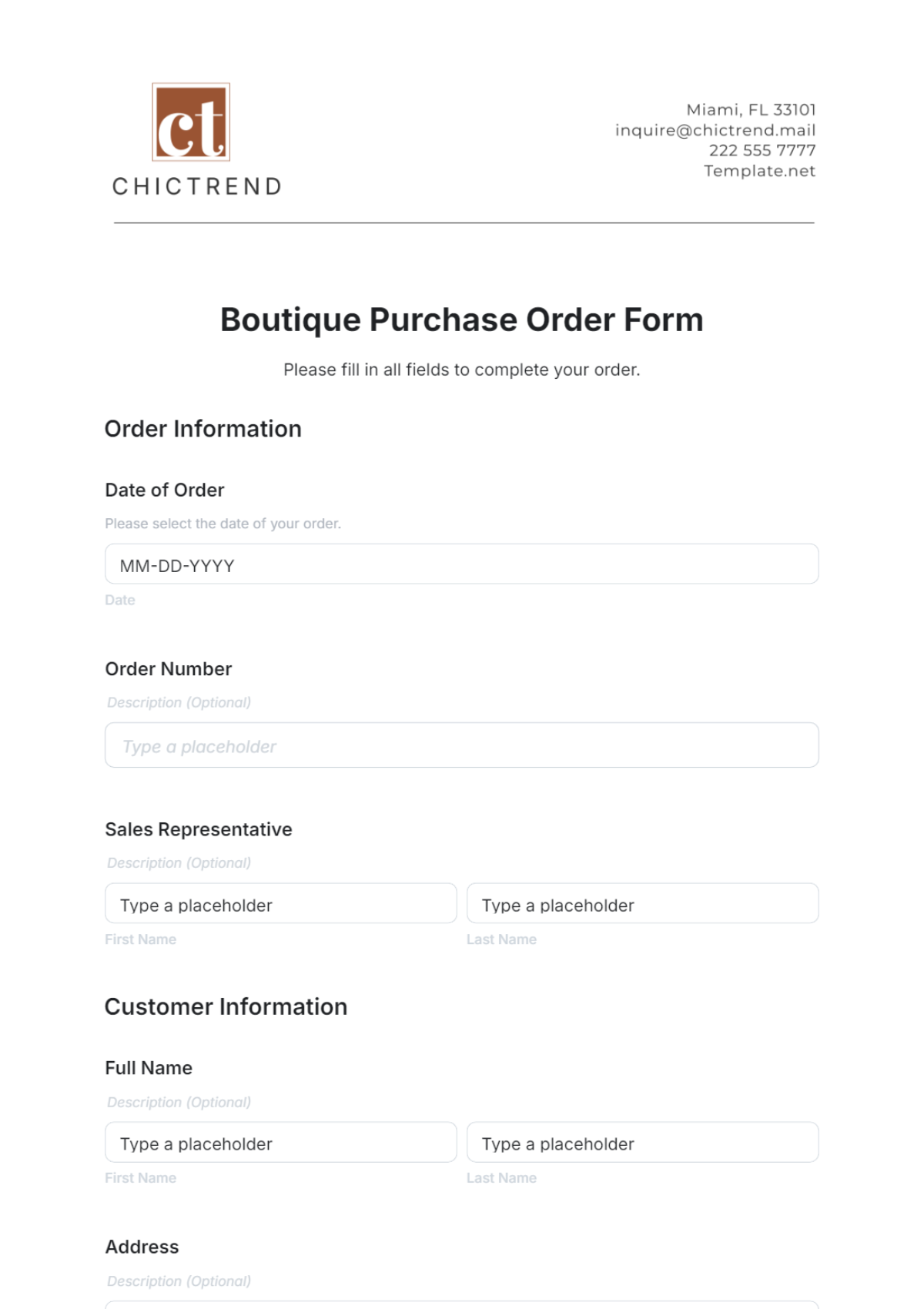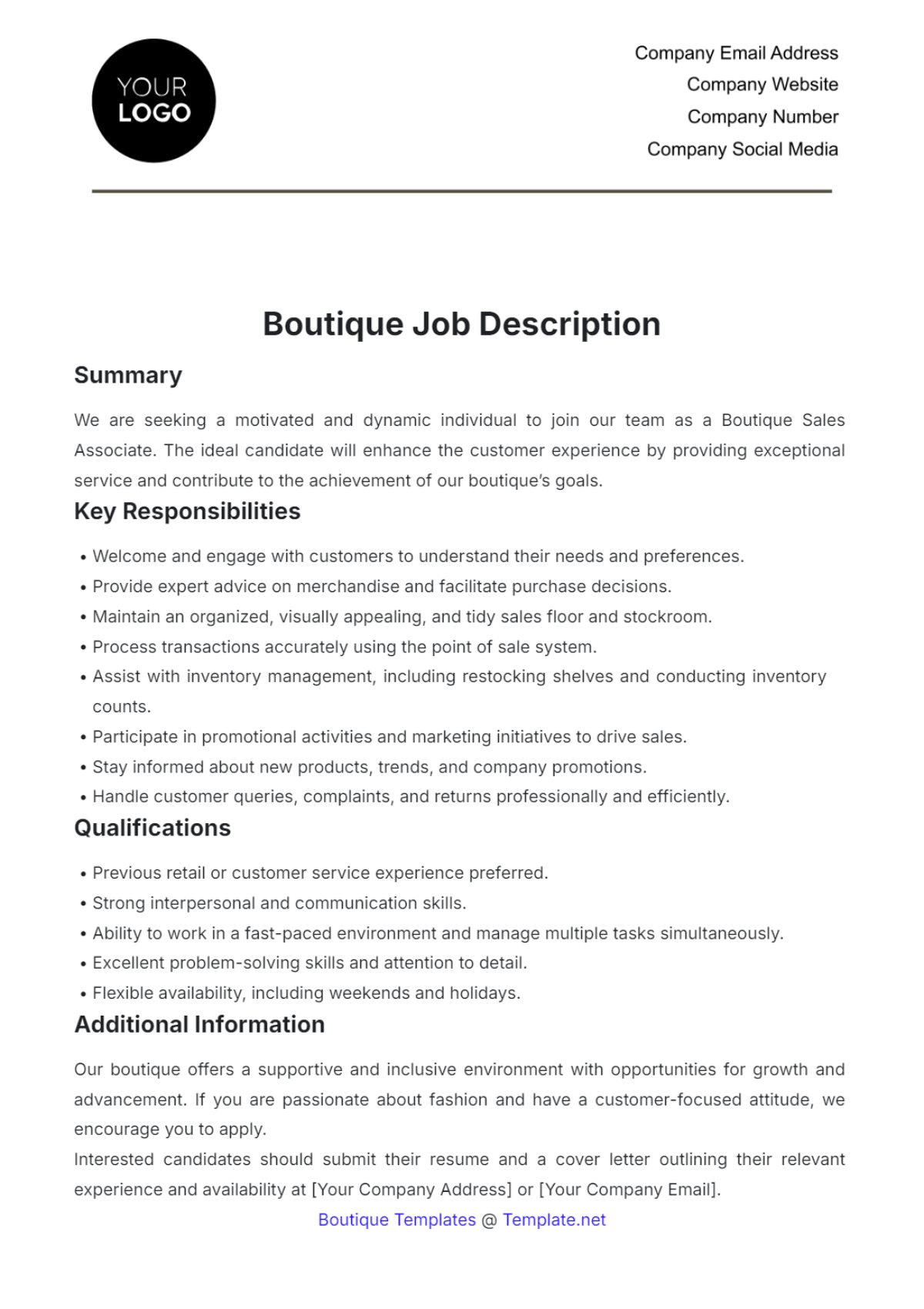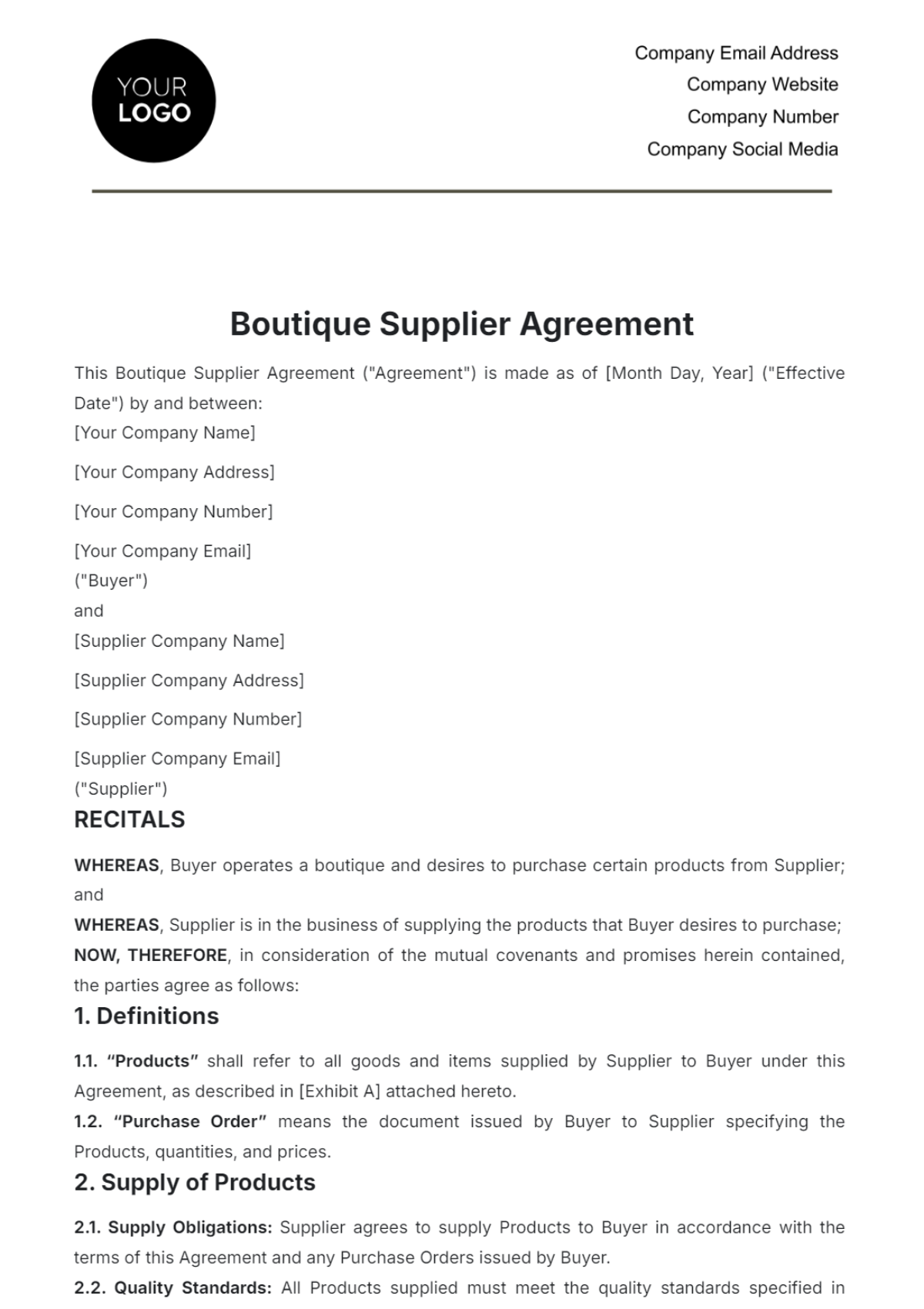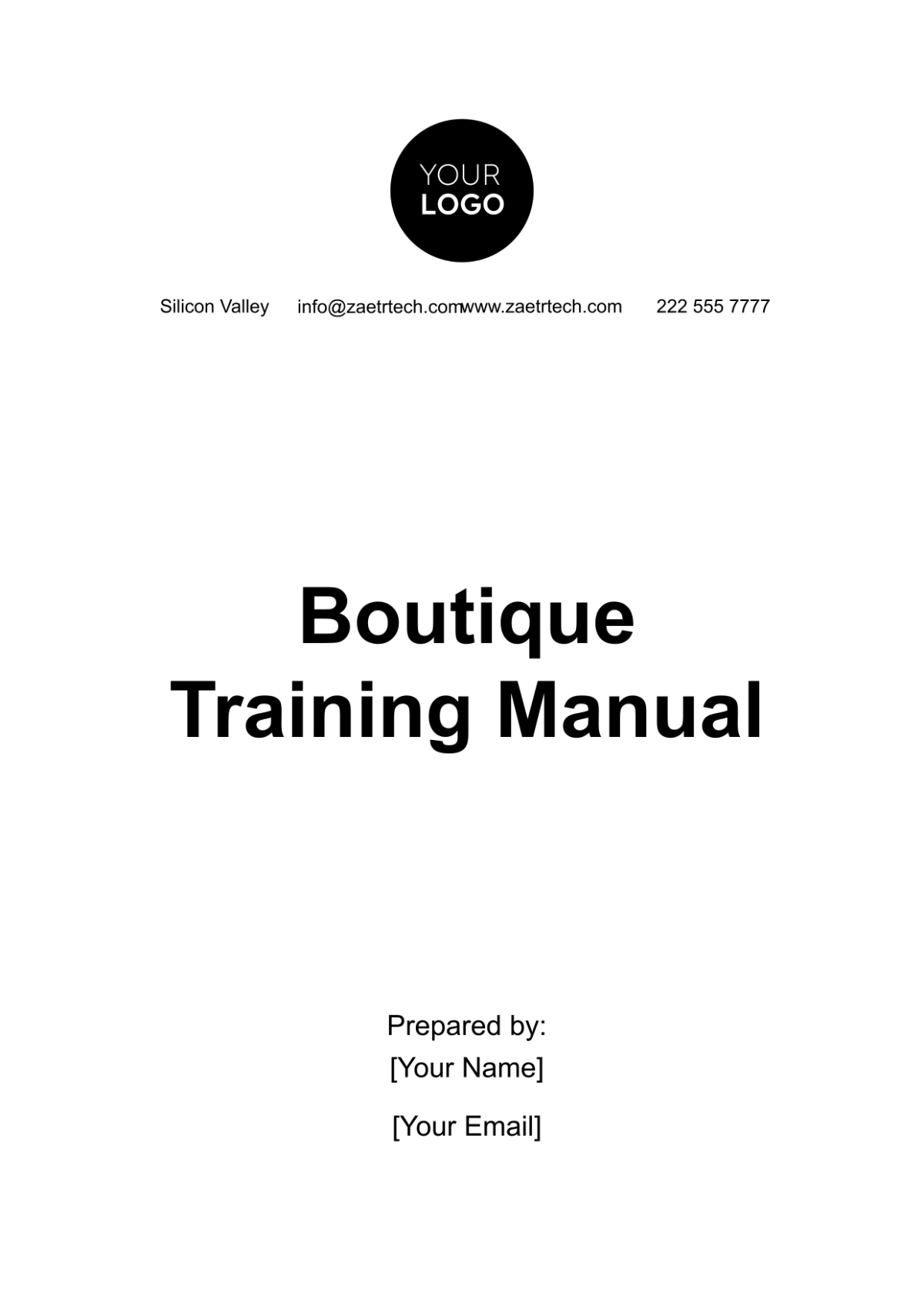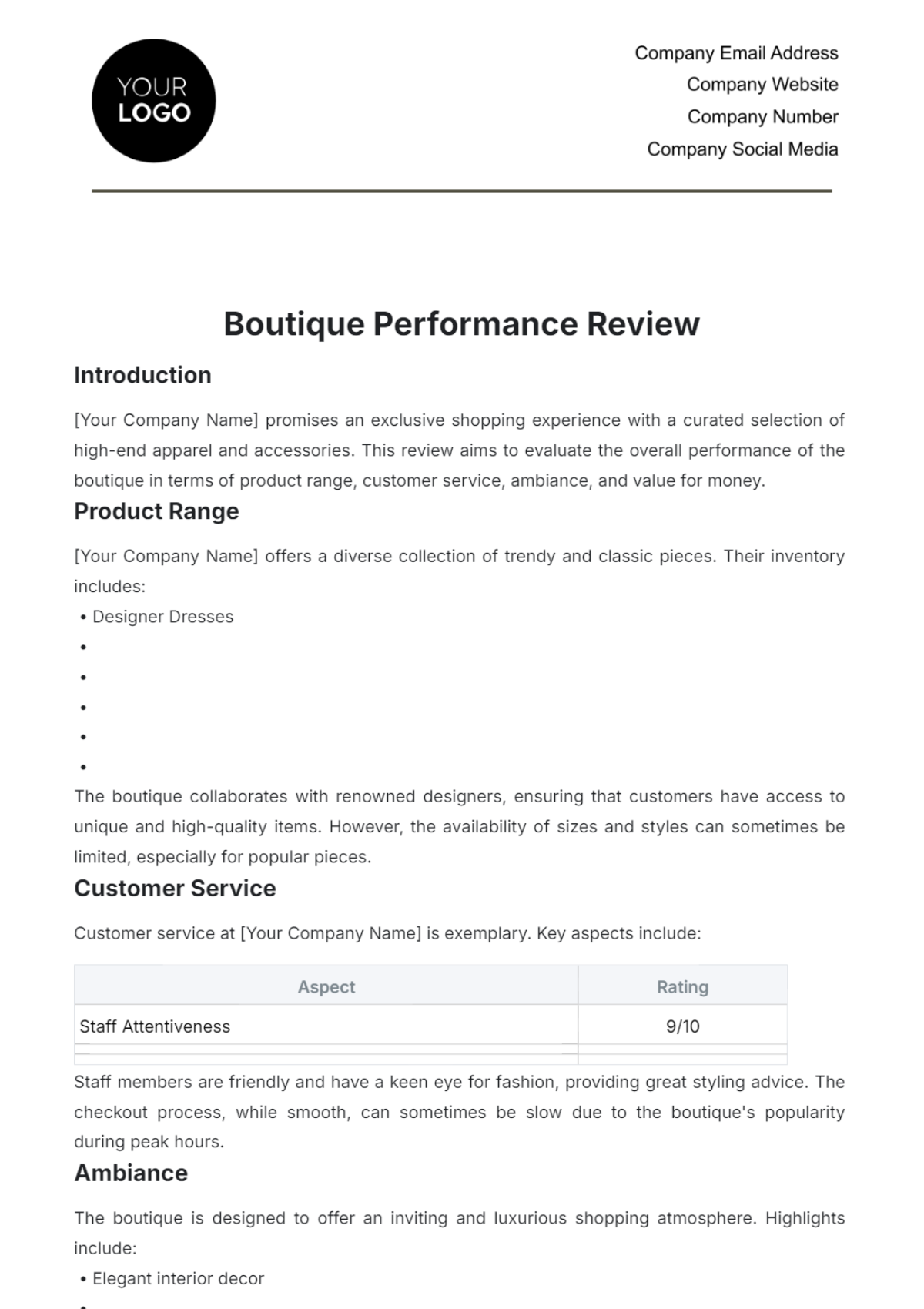Boutique Management
I. Introduction
Managing a boutique requires a well-rounded approach to balance day-to-day operations with long-term growth. At [Your Company Name], boutique management involves overseeing various critical functions such as inventory control, customer service, marketing, and financial management. Each of these areas plays a vital role in ensuring the business operates smoothly while staying competitive in a dynamic retail environment. From ensuring that your boutique is well-stocked with trendy items to managing customer relationships and fostering loyalty, every aspect of boutique management demands attention to detail and strategic planning.
This guide has been designed to help you implement proven techniques to streamline operations, drive sales, and boost profitability. Whether you're a new boutique owner or looking to refine your processes, following these guidelines will help improve your business’s performance while staying compliant with U.S. laws and industry standards. As you navigate through the complexities of running a boutique, [Your Company Name] aims to equip you with the knowledge to succeed in today's competitive marketplace.
II. Key Elements of Boutique Management
Successfully managing a boutique requires attention to several critical areas that directly impact the store's profitability and customer satisfaction. This section covers four key elements essential for maintaining an efficient and competitive boutique: inventory management, customer service, marketing strategies, and financial management. Each element plays a distinct role in ensuring smooth operations while driving growth. By mastering these areas, [Your Company Name] can create a seamless shopping experience for customers and build a sustainable, thriving business.
1. Inventory Management
Effective inventory management is crucial for a boutique. It involves maintaining the right balance of inventory to meet customer demands without overstocking or understocking. Key practices include:
Regular inventory audits.
Utilizing inventory management software.
Implementing a reorder point system.
Tracking seasonal trends.
2. Customer Service
Exceptional customer service is the cornerstone of any successful boutique, as it fosters customer loyalty and sets your business apart from competitors. At [Your Company Name], a commitment to delivering high-quality service can create memorable experiences that keep customers coming back. Key strategies to enhance customer service include:
Training staff in customer service skills: Equip your team with the knowledge and tools to provide courteous, informed, and personalized service. Regular training ensures that staff remain up-to-date on best practices, from handling inquiries to upselling products without being pushy.
Creating a welcoming store environment: A boutique should feel inviting and comfortable. Pay attention to store layout, lighting, cleanliness, and ambiance, ensuring that it aligns with your brand’s identity and caters to customer preferences. This includes offering assistance without overwhelming customers.
Personalizing the shopping experience: Use customer data to tailor the shopping experience. For example, suggest products based on past purchases or offer personalized recommendations. Engage with customers on a personal level by remembering their preferences and providing VIP services like early access to sales or exclusive discounts.
Managing customer complaints effectively: Train staff to handle complaints with empathy, patience, and professionalism. Promptly addressing issues and offering appropriate solutions builds trust, turning negative experiences into opportunities for customer retention.
3. Marketing Strategies
Effective marketing is critical for establishing your boutique’s presence in the market and fostering long-term customer loyalty. At [Your Company Name], targeted marketing efforts can drive both foot traffic and online engagement, ensuring steady growth. Key strategies for impactful boutique marketing include:
Utilizing social media platforms to engage customers: Platforms like Instagram, Facebook, and Pinterest are invaluable for visually showcasing your products and interacting directly with your audience. Share high-quality images, behind-the-scenes content, styling tips, and promotions. Responding to comments and messages promptly builds relationships and keeps your boutique top-of-mind for potential customers.
Organizing in-store events and promotions: Host exclusive events such as launch parties, trunk shows, or seasonal sales to draw in local customers. These events not only boost sales but also create a sense of community around your boutique. Offering time-sensitive promotions can encourage purchases while providing a fun, engaging atmosphere for your clientele.
Collaborating with local influencers: Partnering with local influencers or fashion bloggers can expand your boutique’s reach. Influencers can showcase your products to their followers, giving your boutique greater visibility and credibility within the community. This collaboration works well for driving online traffic and increasing in-store visits.
Implementing loyalty programs: A well-executed loyalty program can significantly increase customer retention by rewarding repeat business and building long-term relationships. Here are some ideas for structuring your loyalty program at [Your Company Name]:
Points-based system
Tiered rewards
Referral incentives
Birthday and anniversary perks
Exclusive member events
4. Financial Management
Strong financial management ensures the sustainability and growth of the boutique. Essential practices include:
Maintaining accurate financial records.
Creating and adhering to a budget.
Monitoring key financial metrics.
Regularly reviewing financial performance.
III. Implementation Plan
An effective implementation plan is essential for translating strategies into actionable steps that drive your boutique's success. At [Your Company Name], this plan outlines key activities, their descriptions, timelines, and responsible personnel to ensure accountability and clarity. By systematically addressing each critical area of boutique management, we can monitor progress and make necessary adjustments to stay aligned with our goals. This structured approach not only enhances operational efficiency but also fosters a proactive culture, ensuring that all team members are engaged and informed about their roles in achieving our boutique’s objectives.
Activity | Description | Timeline | Responsible Person |
|---|---|---|---|
Inventory Audit | Conduct a thorough inventory audit to identify current stock levels and discrepancies. | Monthly | Inventory Manager |
Staff Training | Organize customer service training sessions for all staff members. | Quarterly | HR Manager |
Social Media Campaign | Launch a targeted social media campaign to promote new arrivals and special offers. | Ongoing | Marketing Manager |
Budget Review | Review the boutique's budget and financial performance. | Monthly | Finance Manager |
IV. Conclusion
Effective boutique management necessitates a holistic approach that integrates various critical components, including inventory control, customer service, marketing, and financial management. Each of these elements contributes to creating a seamless shopping experience for customers while ensuring the profitability and sustainability of the business. By prioritizing strategies such as efficient inventory audits, personalized customer service, and engaging marketing campaigns, boutique owners can better meet customer demands and stand out in a competitive market.
Implementing the strategies outlined in this document enables boutique owners and managers at [Your Company Name] to optimize their operations and foster a loyal customer base. As the retail landscape continues to evolve, staying informed about best practices and trends is essential for ongoing success. By embracing a proactive mindset and adapting to changing market dynamics, boutique owners can not only enhance their operational efficiency but also build a brand that resonates with customers. Ultimately, a well-managed boutique can thrive, offering unique products and exceptional service that keeps customers returning and recommending the store to others.


